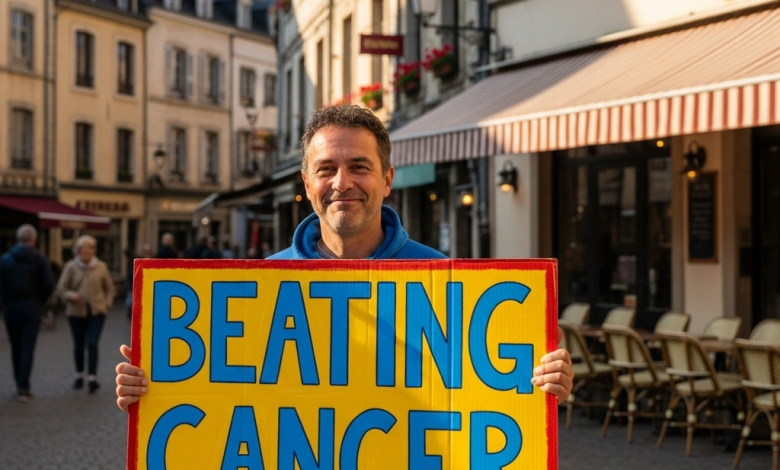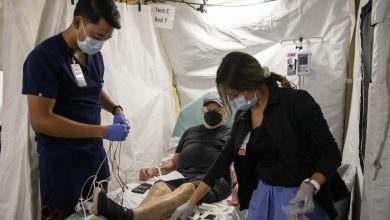The European Country Beating Cancer: Why the UK Wants to Follow Their Lead

A Race Against Cancer
Cancer remains one of the world’s biggest health challenges. Every year, millions are diagnosed, and the numbers are rising with aging populations and lifestyle shifts. While many nations struggle to control cancer rates, one European country has emerged as a surprising leader in beating cancer—offering hope, inspiration, and a model for others.
The UK, facing growing concerns about cancer care, survival rates, and long NHS waiting times, is now closely observing this European success story. But what exactly is this country doing differently? And why is the UK so eager to replicate their strategy?
In this article, we’ll explore:
- Which European country is leading the fight against cancer
- The strategies that brought them success
- Why the UK is paying attention
- What lessons can be applied for better cancer survival rates in Britain
- The future of global cancer care
Section 1: Identifying the Leader – Who Is Beating Cancer in Europe?
When we talk about ‘beating cancer,’ we don’t just mean reducing the number of cases. We mean achieving higher survival rates, ensuring better early detection, and building patient-focused treatment systems
According to recent European health data, Denmark has emerged as a standout performer. Once known for some of the highest cancer mortality rates in Europe, Denmark has transformed its healthcare system in the past two decades. Today, it boasts some of the fastest cancer diagnosis and treatment pathways, leading to significantly improved survival rates.
Other countries like Sweden, Norway, and the Netherlands also show impressive outcomes, but Denmark’s story is particularly remarkable because of the scale of its turnaround.
Section 2: Denmark’s Remarkable Turnaround
2.1 From High Mortality to High Survival
In the early 2000s, Denmark faced a crisis: its cancer survival rates were among the worst in Western Europe. Long waiting lists, late diagnoses, and fragmented care led to poor patient outcomes.
Instead of ignoring the issue, Denmark launched a national cancer strategy that changed everything.
2.2 Key Strategies Denmark Used
Fast-Track Cancer Pathways
- Patients showing possible cancer symptoms are guaranteed quick referral and testing.
- Diagnostic delays that once took months are now reduced to weeks—or even days.
Investment in Early Detection
- Nationwide screening programs (for breast, cervical, and colorectal cancers) are widely accessible.
- Public awareness campaigns encourage citizens to seek medical help at the first signs of illness.
Centralized and Specialized Care
- Cancer treatment centers were consolidated into fewer, larger, specialized hospitals.
- This ensured patients received treatment from highly experienced oncologists and surgeons.
Data and Research
- Denmark heavily invested in health registries and research databases, tracking every cancer case to improve outcomes.
Patient-Centered Support
- Mental health, rehabilitation, and family support became an integral part of cancer care—not just the medical treatment itself.
2.3 The Results
- Significant improvements in five-year cancer survival rates across major cancers (breast, lung, colorectal, prostate).
- Shorter diagnosis times compared to most European nations.
- Improved patient satisfaction and trust in the healthcare system.
Section 3: Why the UK Is Watching Closely
The UK, despite having one of the most well-known healthcare systems in the world—the NHS—is struggling with cancer care.
3.1 The Current UK Challenge
- Long waiting times: Cancer referrals and treatments often face delays.
- Late diagnoses: Many cancers are discovered at later stages, reducing survival chances.
- Strained NHS resources: Understaffing, underfunding, and high patient demand slow down progress.
- Lower survival rates: Compared to many European neighbors, the UK lags behind in cancer survival outcomes.
3.2 Why Denmark Is an Ideal Model
- Denmark’s system closely resembles the NHS structure, making its strategies easier to adapt.
- Both countries share similar population sizes and healthcare challenges.
- The UK sees Denmark’s rapid diagnosis pathways and centralized treatment centers as a roadmap to better survival rates.
Section 4: The UK’s Plans to Follow Denmark’s Lead
4.1 NHS Cancer Strategy
The UK government has pledged reforms inspired by Denmark, focusing on:
- Faster cancer diagnosis targets (within 28 days of referral).
- Expanded screening programs.
- More investment in diagnostic equipment and staff training.
4.2 Pilot Programs Already in Motion
- Rapid Diagnostic Centers (RDCs) have opened across England to speed up cancer checks.
- AI and digital health tools are being trialed to analyze scans more quickly.
- Partnerships with research institutions aim to expand the field of genomic and personalized medicine.
4.3 Challenges Ahead
Adopting Denmark’s system isn’t easy. The UK must overcome:
- Funding gaps: Scaling up requires billions in investment.
- Workforce shortages: A greater number of oncologists, radiologists, and nurses are required.
- Public trust: Many patients remain frustrated with delays and need reassurance.
Section 5: Lessons Other Countries Can Learn
Denmark’s success story isn’t just for the UK—it’s a lesson for the world.
5.1 Lesson 1: Speed Saves Lives
Cancer outcomes improve dramatically when diagnosis and treatment are fast-tracked.
5.2 Lesson 2: Prevention Matters
National awareness and regular screenings can prevent cancer or catch it early.
5.3 Lesson 3: Specialization Works
Centralizing treatment into specialized centers ensures higher expertise and better survival rates.
5.4 Lesson 4: Data Is Power
Using real-time registries and data helps healthcare systems continuously improve.
Section 6: How Patients View the Difference
Imagine two patients:
- In the UK, a patient with possible bowel cancer waits weeks for scans and longer for results, losing precious time.
- In Denmark, the same patient can be tested and diagnosed within 10 days, receiving treatment faster and increasing their chances of survival.
This patient-centered efficiency is exactly why the UK admires Denmark’s model.
Section 7: The Future of Cancer Care in the UK
7.1 The Hope
If the UK can successfully adopt Denmark’s methods, experts predict a significant rise in survival rates within the next decade.
7.2 The Innovation Factor
The UK is also focusing on innovations like:
- AI-powered imaging
- Genomic medicine
- Personalized therapies
- New drug pipelines
7.3 The Global Ripple Effect
If the UK succeeds, other countries may follow suit, creating a European-wide revolution in cancer care.
Section 8: How You Can Play a Role in Beating Cancer
Cancer care isn’t just about governments and hospitals—it’s also about individuals. Here’s how people can contribute:
- Attend screenings regularly (breast, cervical, bowel).
- Don’t ignore symptoms—see a doctor quickly.
- Adopt a healthier lifestyle—balanced diet, no smoking, limited alcohol, regular exercise.
- Support cancer charities—they fund vital research and patient care.
Conclusion: A Shared Fight for a Healthier Future
Denmark’s transformation proves that beating cancer is possible with the right strategies, investment, and patient-centered care. The UK’s determination to learn from this success offers hope to millions.
Cancer is not just a disease—it’s a test of how societies value health, innovation, and human life. By following Denmark’s lead, the UK could usher in a new era where cancer survival rates rise, patients feel supported, and families gain hope.
The fight is far from over, but the path forward is clearer than ever.




